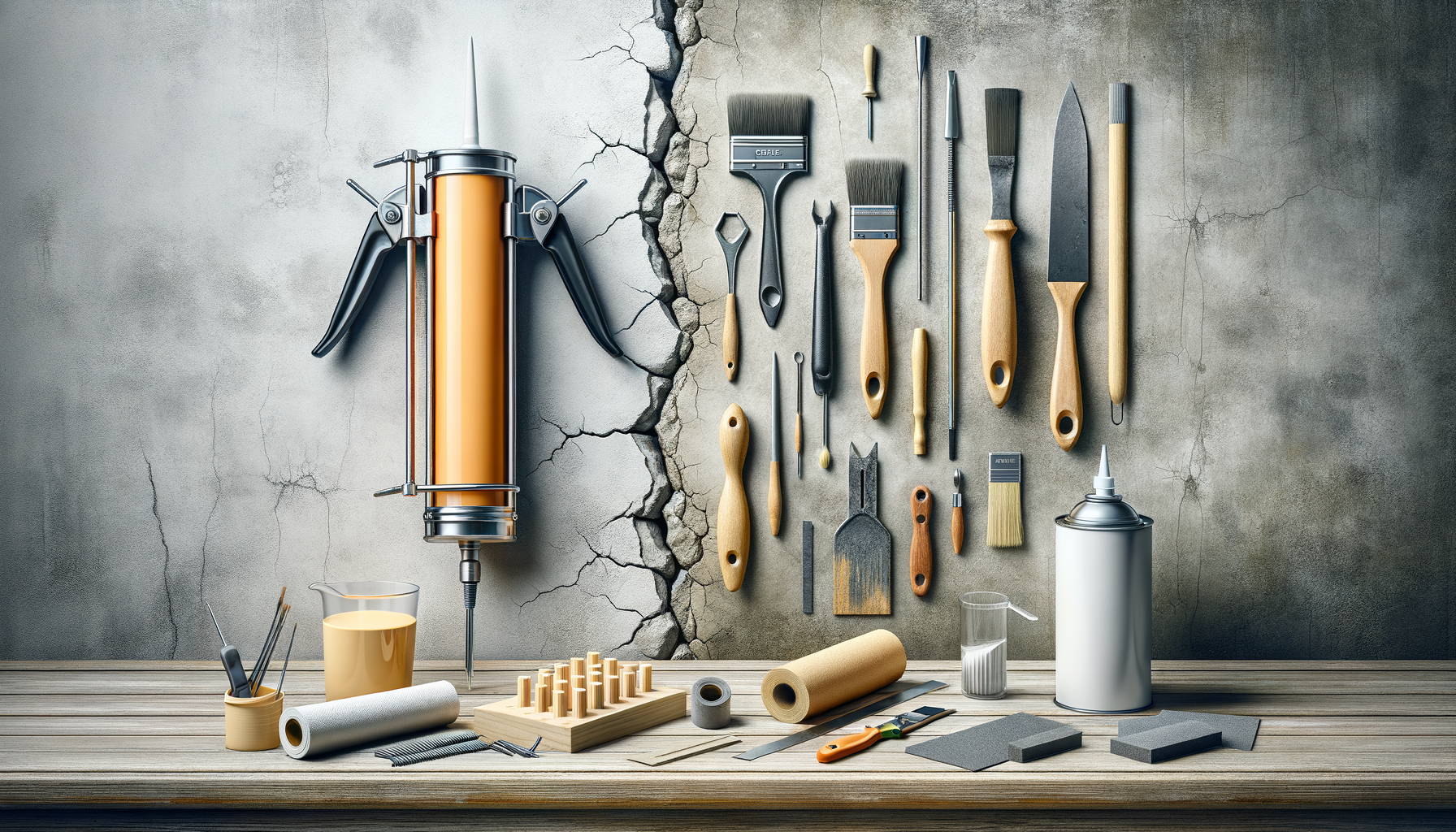Understanding the Types of Cracks
Before embarking on any crack repair project, it’s essential to understand the different types of cracks you might encounter. Cracks can vary significantly depending on their location, cause, and severity. Common types include hairline cracks, which are typically superficial and do not affect the structural integrity, and settlement cracks, which occur as a building settles into its foundation. More severe cracks, such as structural cracks, can indicate significant issues with a building’s foundation or support systems.
Identifying the type of crack is crucial because it determines the repair method you’ll need to employ. For instance, hairline cracks might only require a simple patching compound, whereas structural cracks might necessitate professional intervention. Understanding these differences can save you time and money by ensuring that you apply the correct solution to each problem.
In addition to type, the location of the crack also plays a significant role in determining the repair approach. Cracks in walls, floors, and ceilings each have unique characteristics and require different materials and techniques for effective repair. By accurately identifying the type and location of the crack, you can better plan your repair strategy and achieve more durable results.
Choosing the Right Materials for Crack Repair
Once you’ve identified the type of crack you’re dealing with, the next step is selecting the appropriate materials for repair. The materials you choose will depend on the crack’s location and severity. For minor cracks, a simple patching compound or filler might suffice. These products are typically easy to apply and can be painted over once dry, making them a convenient choice for cosmetic repairs.
For more significant cracks, especially those in structural elements, you may need to use more robust materials such as epoxy or polyurethane. These materials are designed to penetrate deep into the crack, providing a strong bond that can withstand pressure and prevent further damage. Additionally, reinforcing materials like fiberglass mesh or metal lath can be used to provide extra support to repaired areas, particularly in walls and ceilings.
When selecting materials, it’s also important to consider any environmental factors that might affect the repair. For example, areas with high humidity or temperature fluctuations may require specific products that can withstand such conditions without degrading over time. By choosing the right materials, you ensure that your repairs are not only effective but also long-lasting.
Step-by-Step Guide to Repairing Cracks
Repairing cracks yourself can be a rewarding and cost-effective process if done correctly. Here is a step-by-step guide to help you tackle this project:
- Preparation: Start by cleaning the area around the crack to remove any dirt or debris. This ensures that the repair materials adhere properly.
- Assessment: Evaluate the crack to determine its type and severity. This will guide your choice of materials and techniques.
- Material Selection: Choose the appropriate repair materials based on your assessment. For minor cracks, a simple filler may suffice, while more severe cracks may require epoxy or polyurethane.
- Application: Apply the chosen repair material following the manufacturer’s instructions. Be sure to fill the crack completely and smooth out any excess material for a seamless finish.
- Finishing: Once the repair material has cured, sand the area to create a smooth surface. You can then paint or apply a finish to match the surrounding area.
By following these steps, you can effectively repair cracks in your home, preventing further damage and maintaining the aesthetic appeal of your living space.
Preventing Future Cracks
While repairing existing cracks is crucial, it’s equally important to take steps to prevent future cracks from occurring. One of the primary causes of cracks is the natural settling of a building, which is often unavoidable. However, there are measures you can take to minimize the risk of cracks developing.
Regular maintenance of your home’s foundation and structural elements is key. This includes ensuring proper drainage around the foundation to prevent water accumulation, which can lead to soil expansion and contraction. Additionally, maintaining a consistent indoor humidity level can help prevent cracks caused by the expansion and contraction of building materials.
Another preventive measure is to address any underlying issues that may contribute to cracking. For example, if you notice cracks forming repeatedly in the same area, it may indicate a more serious problem such as foundation settling or structural weakness. In such cases, consulting with a professional can help identify and resolve the root cause, preventing further damage.
By taking proactive steps to prevent cracks, you can maintain the structural integrity and appearance of your home, saving time and money on future repairs.
When to Seek Professional Help
While many crack repairs can be handled as DIY projects, there are situations where professional help is necessary. Structural cracks, for instance, often require the expertise of a structural engineer or contractor to assess and repair safely. These professionals can provide a detailed analysis of the problem and recommend appropriate solutions that ensure the long-term stability of your home.
Additionally, if you’re unsure about the type or severity of a crack, consulting with a professional can provide peace of mind and prevent costly mistakes. They can help you determine whether a crack is purely cosmetic or indicative of a more serious issue that needs immediate attention.
It’s also advisable to seek professional help if you’re dealing with cracks in critical areas such as load-bearing walls or foundation elements. These areas are integral to your home’s structural integrity, and improper repairs can lead to significant safety hazards.
In conclusion, while DIY crack repair can be a cost-effective solution for minor issues, knowing when to call in a professional is crucial for maintaining the safety and stability of your home. By recognizing the limits of your skills and seeking expert advice when necessary, you can ensure that your home remains a safe and comfortable environment.




Leave a Reply